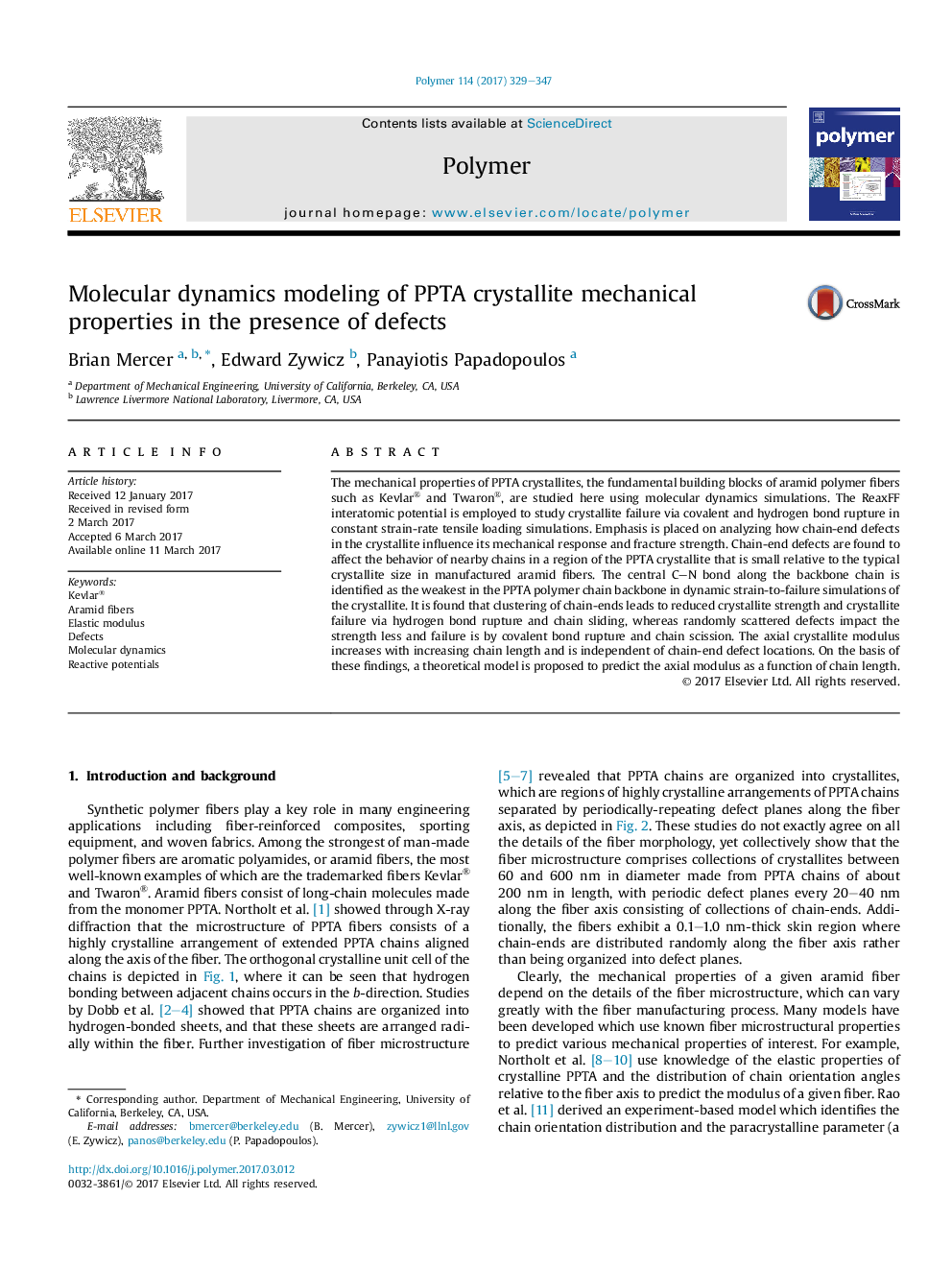| Article ID | Journal | Published Year | Pages | File Type |
|---|---|---|---|---|
| 5178289 | Polymer | 2017 | 19 Pages |
•The weakest primary backbone chain bond in PPTA is identified.•Crystallite failure modes under constant strain-rate loading are analyzed.•Defect distribution determines crystallite failure mode and strength.•A model for crystallite modulus based on defect concentration is proposed.
The mechanical properties of PPTA crystallites, the fundamental building blocks of aramid polymer fibers such as Kevlar® and Twaron®, are studied here using molecular dynamics simulations. The ReaxFF interatomic potential is employed to study crystallite failure via covalent and hydrogen bond rupture in constant strain-rate tensile loading simulations. Emphasis is placed on analyzing how chain-end defects in the crystallite influence its mechanical response and fracture strength. Chain-end defects are found to affect the behavior of nearby chains in a region of the PPTA crystallite that is small relative to the typical crystallite size in manufactured aramid fibers. The central CN bond along the backbone chain is identified as the weakest in the PPTA polymer chain backbone in dynamic strain-to-failure simulations of the crystallite. It is found that clustering of chain-ends leads to reduced crystallite strength and crystallite failure via hydrogen bond rupture and chain sliding, whereas randomly scattered defects impact the strength less and failure is by covalent bond rupture and chain scission. The axial crystallite modulus increases with increasing chain length and is independent of chain-end defect locations. On the basis of these findings, a theoretical model is proposed to predict the axial modulus as a function of chain length.
Graphical abstractFigure optionsDownload full-size imageDownload high-quality image (230 K)Download as PowerPoint slide
